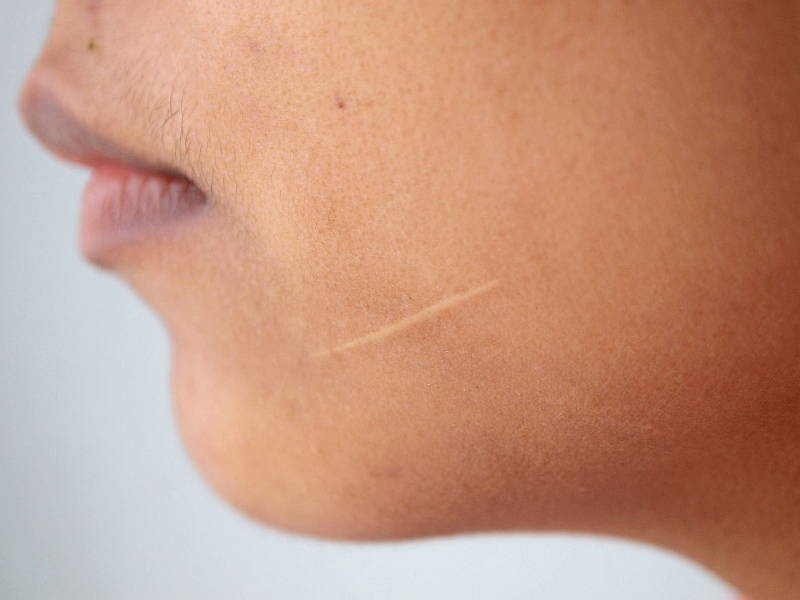A keloid is an overgrown scar that projects above the skin surface. Skin heals by the formation of scar tissue, which at first is often red and thickened. The scar usually then flattens and becomes paler with time. Unfortunately, sometimes scars enlarge to form firm, smooth, hard growths called keloids.
A hypertrophic scar has increased scar tissue but is confined to the area of injury. Hypertrophic scars may very slowly improve with time, whilst keloids are frequently permanent.
Cause
 No one knows why keloids form. While most people never form keloids, others develop them after minor injuries and even insect bites or pimples. Keloids may form on any part of the body, although the upper chest and upper back are especially prone to keloid formation. Dark-skinned persons form keloids more easily than Caucasians.
No one knows why keloids form. While most people never form keloids, others develop them after minor injuries and even insect bites or pimples. Keloids may form on any part of the body, although the upper chest and upper back are especially prone to keloid formation. Dark-skinned persons form keloids more easily than Caucasians.
Treatment
Treatment of keloids is difficult. Surgical removal of a keloid usually results in a second keloid forming, which may be larger than the initial lesion. The first line treatment is to inject a long-acting cortisone into the keloid itself. After injection with cortisone, the keloid becomes less noticeable and starts to soften and flatten. The injection is usually repeated every four to six weeks until satisfactory improvement is obtained.
Another option is to use silicon sheeting. The silicone is usually worn for at least twelve to fourteen hours a day over the scar. Over a three to six month period this can bring about good flattening of the scar and take away a deal of redness.
Vascular lasers may be used to remove the blood vessel component of scars and thereby flattens them. Treatment is relatively straightforward and works best when the scars are treated during the first six months, when they are more vascular. Smaller, hypertrophic scars will respond best.
Irradiation therapy (x-ray) is another effective way of preventing keloid formation following surgical excision. Surgical removal and irradiation may be recommended for a patient with a single scar, where surgical excision is technically feasible.
Very widespread scars may also be treated with a pressure garment. Such garments are uncomfortable but can be slowly effective.
If you have any questions or concerns about keloids contact your local doctor, who will arrange for you to see a dermatologist. Contact us today.



